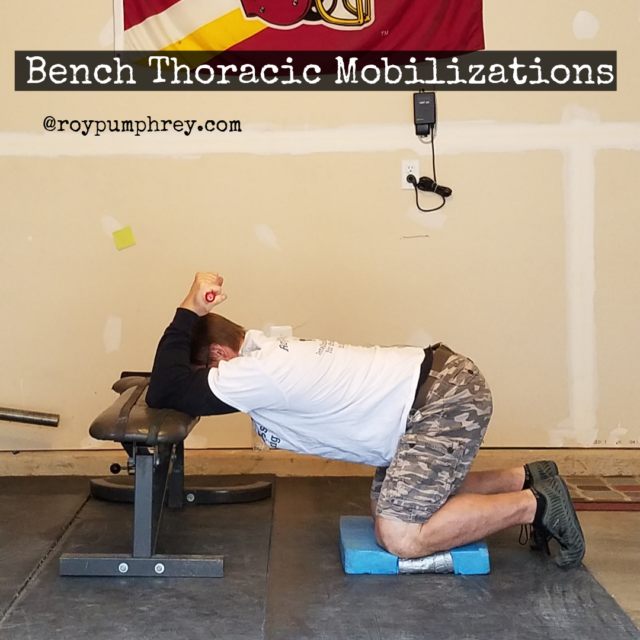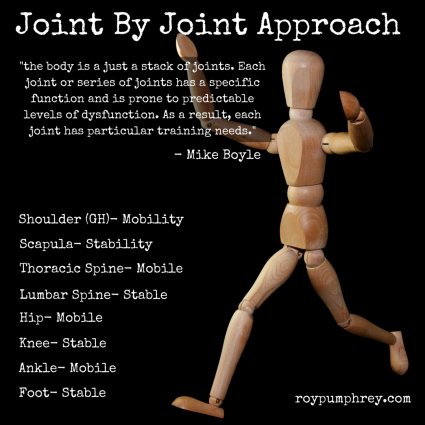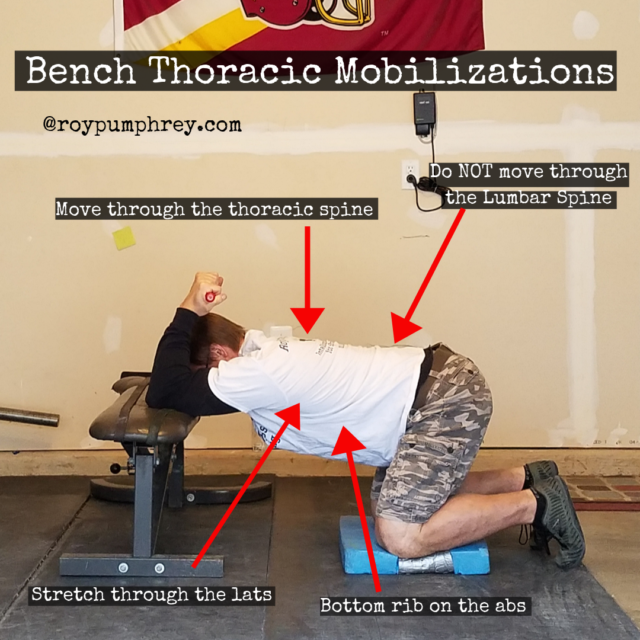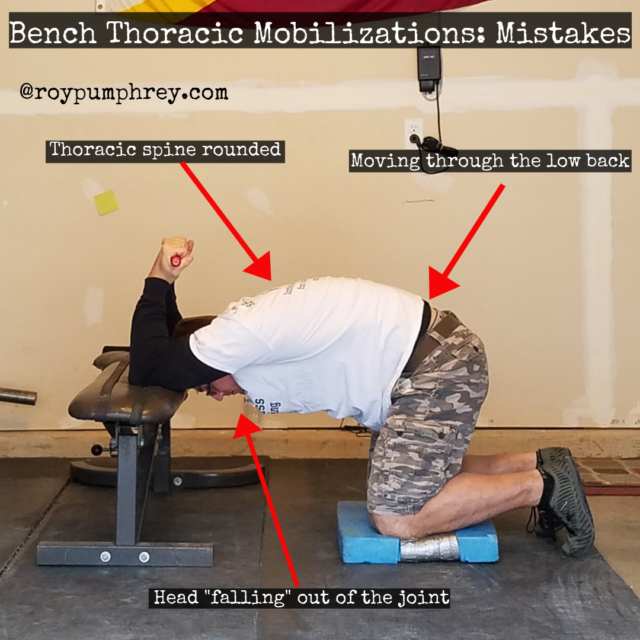
Your Thoracic Mobility Probably Sucks.
I don’t care if you have the worlds most ergonomic chair, desk setup, a standing desk and one of those bra looking posture things.
Your thoracic mobility probably sucks.
We sit, slouched over,
Stand, slouched over,
And generally live life, slouched over.
And since,
“tissues respond and adapt along the lines of stress applied”
We end up….slouched over.
But there’s good news.
We can make it better.
Why’s Thoracic Mobility Matter Anyway?
Welp, this guy, subscribes to the joint-by- joint approach.
The short version of which is: the joints of the body alternate needing mobility and stability.

Now, the joint-by-joint approach isn’t perfect or even always applicable, but for most people, most of the time, it fits.
So what does a immobile or flexed forward thoracic spine mean?
In short, you may be more at risk for low back and shoulder pain because the joints above and below, the lumbar and cervical spine, are going to pick up the slack for the stiff thoracic segments and move more.
Back Pain:
For years spine biomechanic G.O.A.T (greatest of all time) Stu McGill has preached,
“Painful low backs tend to be backs that exhibit the most motion in them”<—Yes, I paraphrased it.
and the current evidence shows that the thoracic and lumbar regions of the spine are intimately related.
Not only does the posture of the lumbar spine goes “upstream” and affect the movement of the thoracic spine,
“Functional differences emerged across muscles, as low back musculature was greatest in maintaining flexed lumbar postures, while thoracic erector spinae and abdominals showed bilateral differences with greater activations to the ipsilateral side. Combined postures have been previously identified as potential injury modulators and bilateral muscle patterns can have an effect on loading pathways. Overall, changes in thoracic motion were modified by lumbar spine posture, highlighting the importance of considering a multi-segmented approach when analyzing trunk motion.“- Impact of lumbar spine posture on thoracic spine motion and muscle activation patterns.
Thoracic posture and movement goes “downstream” and directly affects the lumbar spine mechanics,
“Tasks with thoracic movement and a neutral lumbar spine posture resulted in increases in co-contraction within the lumbar musculature compared with quiet standing and maximum trunk range-of-motion tasks. Findings indicated an interaction between the 2 spine regions, suggesting that thoracic posture should be accounted for during the investigation of lumbar spine mechanics.”- Interaction Between Thoracic Movement and Lumbar Spine Muscle Activation Patterns in Young Adults Asymptomatic for Low Back Pain: A Cross-Sectional Study.
So, I’m just going to throw it out there that a stiff, immobile, extension challenged, flexed forward, quaimodo(ish), thoracic spine is not going to result in optimal lumbar spine mechanics, muscle activation patterns and loading.
Just a guess.
Shoulder Pain:
A thoracic spine that can’t extend is a thoracic spine that can’t get out of the way of the scapula.
If the ribcage cant get out the way of the scapula then the scapula cant get out of the way of the humerus (especially at end range scapula retraction and shoulder flexion) <—the end of a row and lifting overhead
When these bones can’t get out of the way of each other the soft tissue becomes the most dreaded of things…
IMPINGED
*which isn’t necessarily a bad thing, all the time. In fact, at end range of motion, your shoulder always gets impinged as Dr. Jacob Harden describes here. when you click ME.
Impingement is a problem when it occurs too often and to too much of a degree.
And we’ve seen using physical manipulation to improve thoracic mobility can improve shoulder pain,
“improving thoracic and rib segmental mobility following manipulation may provide biomechanical contributions towards improved shoulder range of motion, particularly for overhead movements. Norlander et al28–30 have previously reported on the relationship between reduced cervicothoracic mobility and the presence of neck-shoulder pain……This study demonstrated that thoracic spine and upper rib manipulative therapy is associated with improvement in shoulder pain and ROM immediately following intervention in patients with a primary complaint of shoulder pain. No patients reported adverse effects or a worsening of shoulder symptoms following treatment with thoracic spine or upper rib manipulations. Although further research is necessary, this preliminary study supports the concept of a regional interdependence between the thoracic spine, upper ribs, and shoulder in patients with shoulder pain.”- The Immediate Effects of Thoracic Spine and Rib Manipulation on Subjects with Primary Complaints of Shoulder Pain
But you probably don’t have a manual therapist at your disposal all the time.
Am I right?
So your gonna need to get that ribcage mobile again yourself.
Bench Thoracic Mobilizations

Checklist:
- Elbows and bottom of the upper arm, not whole upper arm on the bench.
- Have something to hold, make sure the whole palm is on it. Don’t just grip with the first two- three fingers and let the pinky and ring finger hang off the “bar”.
- DO NOT OVERARCH THE LOW BACK
- DO NOT DROP THE HEAD
- Bottom rib on the abs at all times
- Shoulders in the joint
- Rock back into the hips
- Anchor into the bench with the WHOLE elbow. Try to anchor in there and use that to “pry” the thoracic spine open.
- Chest up, but bottom rib down.

Bro Tips:
- DONT HANG THE DAMN HEAD
- Control the low back. <—it shouldn’t move during bench throracic mobilizations
- Yes, your lats should stretch. A lot.
Super Bro Tip:
BREATHE DEEP
Breath into the belly/ pelvis during bench thoracic mobilizations.
If you breath “high” into the chest, this drill ain’t gonna do a whole lot.
In fact, it’ll do NOTHING and suck and be a waste of time.
So breathe deep and smooth.


